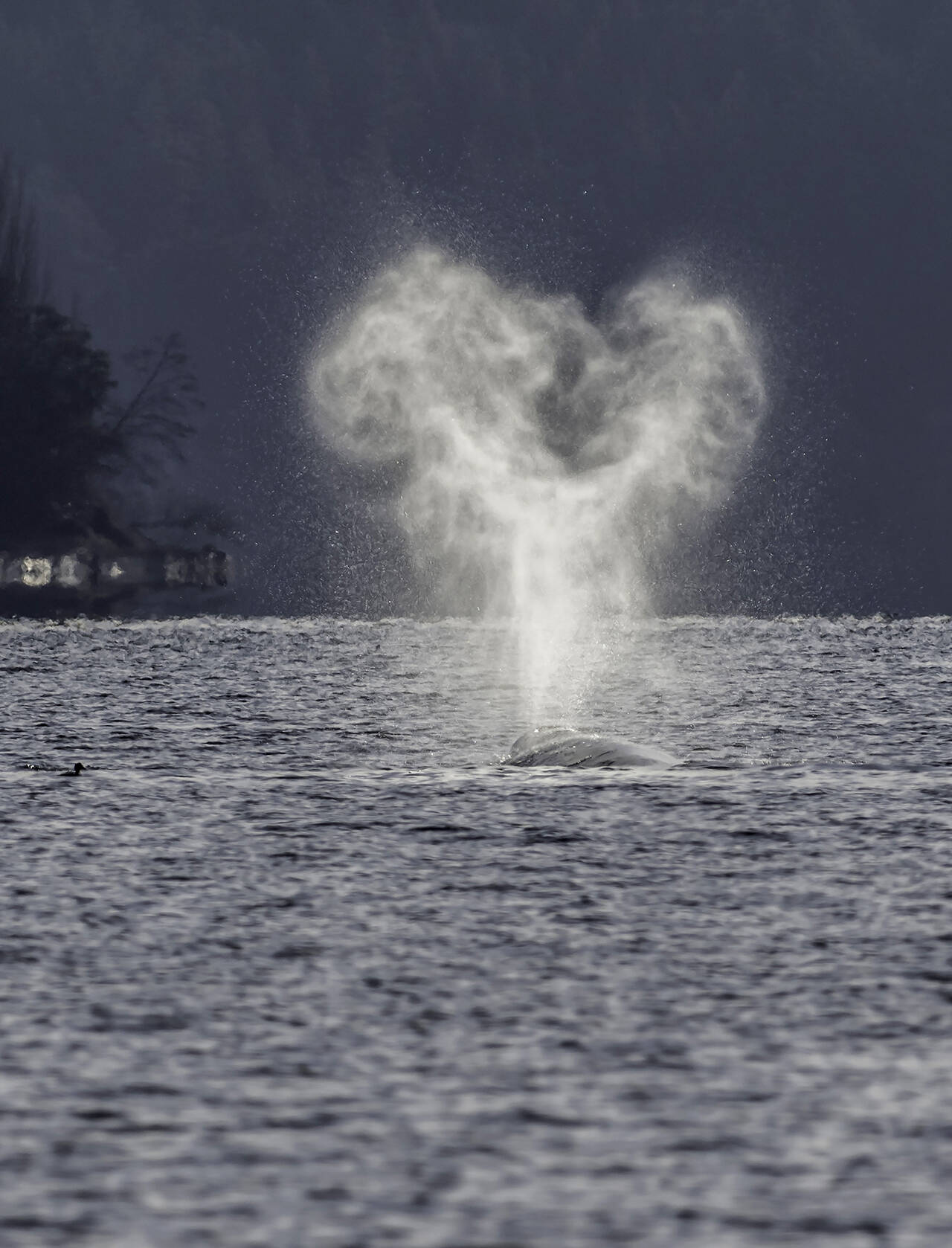By The Herald Editorial Board
Humans, of course, can’t talk to whales, but migrating gray whales — now making their way up the West Coast from Mexico to Alaska — may have a message for us about shifts in marine ecosystems and the limits of nature’s resiliency in the face of climate change.
The most recent message washed up on a Camano Island beach, leaving a pungent bulletin that is expected to linger for two to three months as the carcass of a gray whale, estimated at 30,000 to 40,000 pounds, is left to decompose.
The dead whale originally was beached at the end of March on a more remote beach at the island’s northwest. Storms since have pushed the rotting carcass closer to waterfront residences on the island. Even so, the plan remains to let the whale’s remains remain, allowing an application of agricultural lime to speed decomposition and control odor, as The Herald’s Jacqueline Allison reported Tuesday.
The dead whale may represent what could be the tail end of an “unusual mortality event” that National Oceanic and Atmospheric Administration Fisheries has been tracking since early 2019, with some 531 whale strandings recorded as of this April.
NOAA tallied 122 gray whale deaths on U.S. beaches in 2019, including 34 in Washington state, and a total West Coast tally, including Canada and Mexico, of 216 dead gray whales that year. Those numbers have eased in following years: a total of 172 dead gray whales on the West Coast were recorded in 2020, dropping to 114 in 2021. So far in 2022, only four standings have been recorded on U.S. beaches, and 29 total from Mexico to Alaska.
Still, those more observable whale deaths represent only a fraction of the estimated total deaths of gray whales; NOAA estimates that the stranding deaths may account for only 4 percent to 13 percent of total mortality for the gray whales.
This isn’t the first such mortality event that NOAA has tracked in recent decades; similar high rates of gray whale deaths were reported in 2015-16 and in 1999-2000, when the populations of Eastern North Pacific gray whales declined to as few as 16,000.
Although malnourishment has been noted among many of the dead whales, NOAA has yet to announce official findings for what has caused the most recent mortality event or even for the 2015-16 event. But for the more than 650 strandings in 1999-2000, NOAA noted that the stranded whales were emaciated and calf production had declined significantly, blaming “oceanographic factors that limited food availability” as the likely cause.
Encouragingly, even after recent die-offs, the gray whale population is now estimated to be around 27,000 individuals. But there is another observation that all may not be right regarding the whale’s habitat.
Increasingly in recent years, a group of about a dozen or more gray whales — dubbed the Sounders — as they migrate between winter waters in Mexico and summer feeding grounds in Alaska, take a detour into the Salish Sea and Puget Sound, focused around Whidbey Island where they feed on ghost shrimp and build up fat reserves before resuming their journeys.
This year their arrival was exceptionally early. Usually showing up around March, a few of the Sounders arrived much earlier and two stayed the winter here, never making the trip to Mexico, John Calambokidis, a research biologist with Cascadia Research Collective, recently told public radio station KNKX (88.5 FM).
The Sounders made their first forays into the Salish Sea in the early 1990s and again in 1999 and 2000, during earlier mortality events, according to Cascadia.
The Salish Sea stopover may be just the thing for starving whales.
“Over a period of just a week or two, the Sounders whales are noticeably getting a better body condition,” Calambokidis said of their gorging on ghost shrimp.
Over the years, word of the shrimp spread appears to have gotten out. Starting with just two whales in 1990, the Sounders have since grown to as many as 15 each year. The whale found on Camano Island — which was described as appearing malnourished but had not previously been part of the Sounders group — may have been in search of the same bounty.
Calambokidis is concerned there may be limits to the number of whales the stocks of ghost shrimp can support and for how long.
“And that’ll be the big question as we have more gray whales arriving earlier and staying longer.”
The concerns for the gray whales are little different than those for the Salish Sea’s Southern Resident orca whales, who are struggling to support three pods of some 70 whales in light of habitat impacts, including declining runs of chinook and other salmon on which the orcas feed; impacts from vessel noise and traffic that hamper the whales’ communication and foraging for prey; and the presence of toxic chemicals from runoff and sewage and stormwater outfalls that effect the health of the whales and their sources of food.
The apparent starvation death of a gray whale on a Camano Island beach — as well as the chance to view healthy gray whales off Whidbey Island — provides more reminders of the importance of protecting the health of the Salish Sea and all the waters in which both whale species live and brings increasing attention to recognize the impacts of climate change, not just on the whales’ habitat, but ours.
Talk to us
> Give us your news tips.
> Send us a letter to the editor.
> More Herald contact information.

























